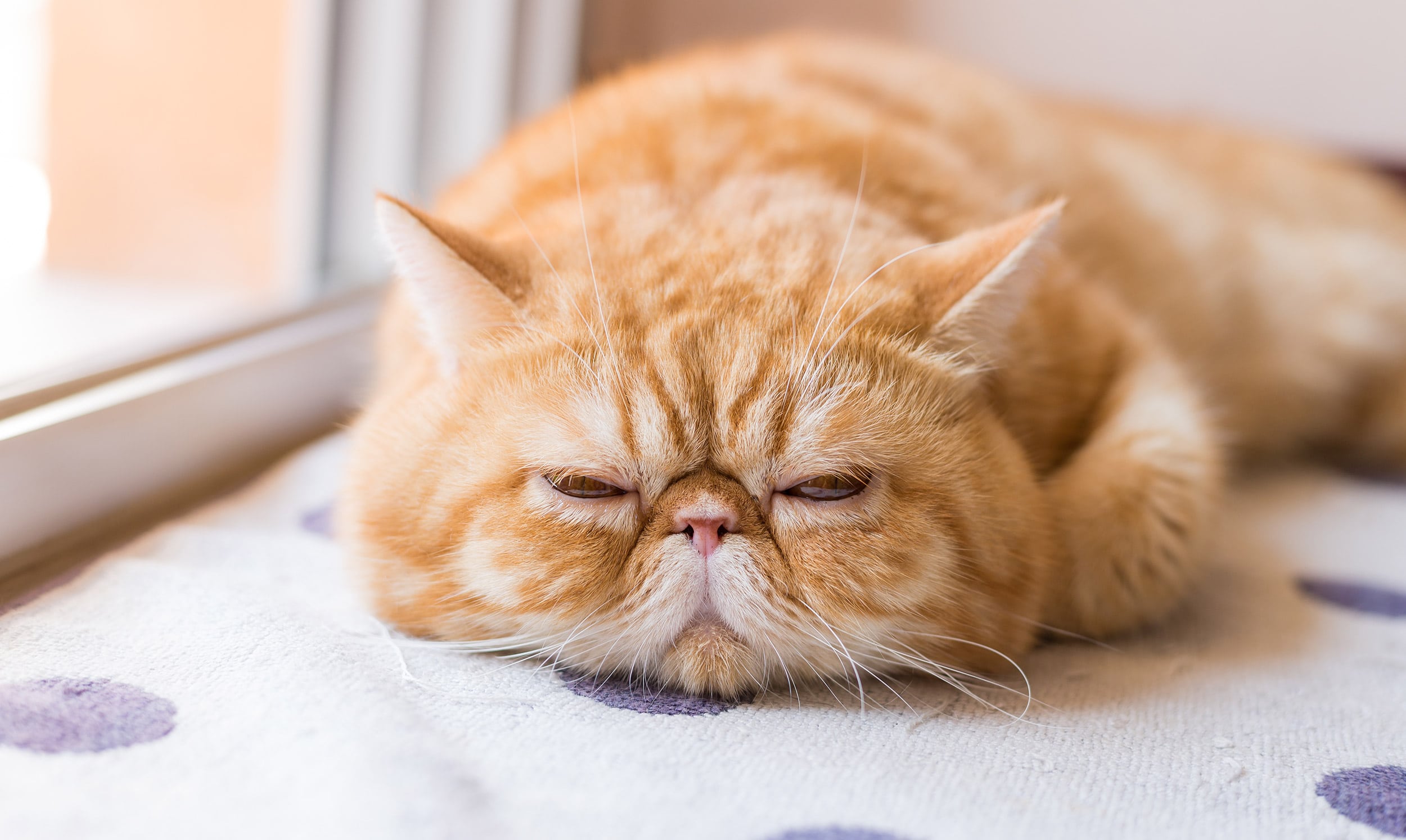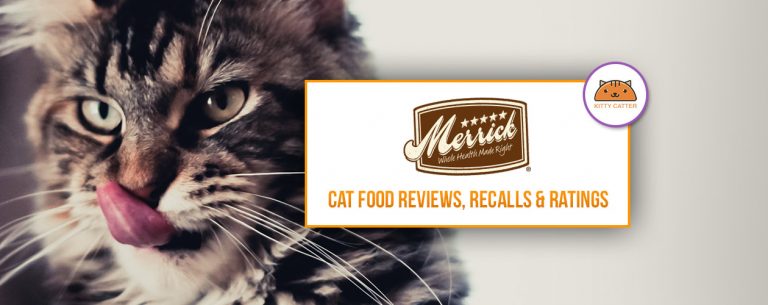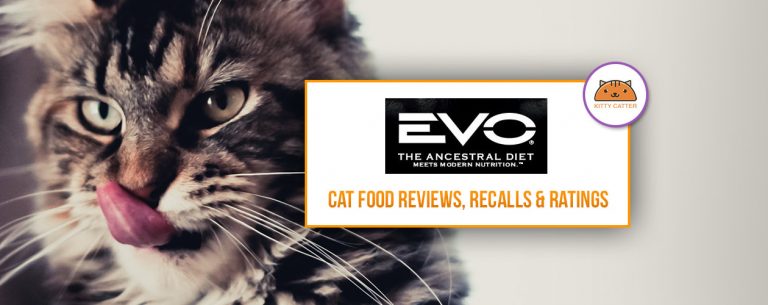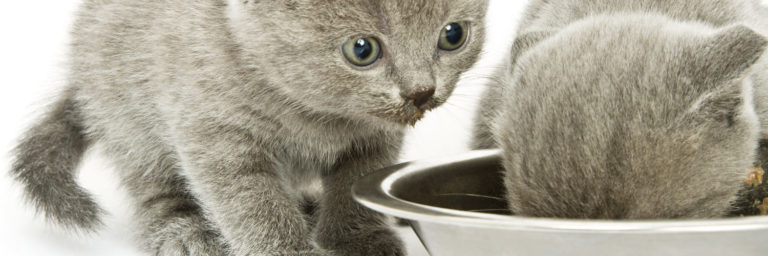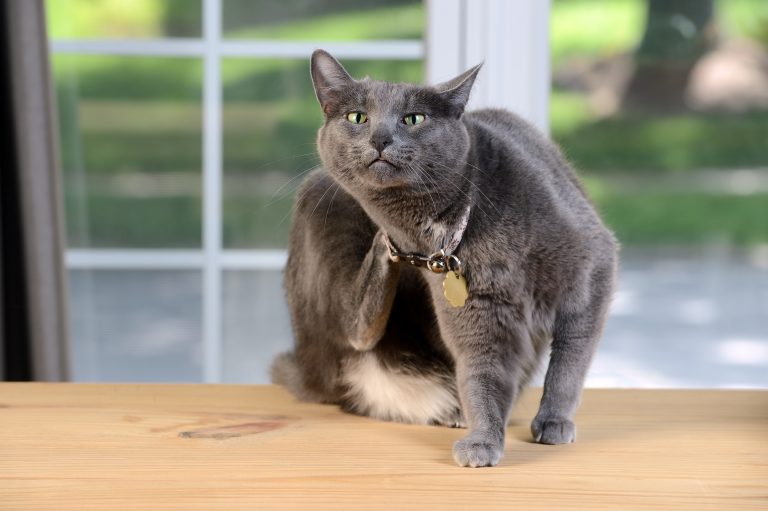Best Cat Food For Exotic Shorthair Cats
Contents of Article
Introduction/History
If you think that the Exotic Shorthair resembles a Persian, you are correct. This breed was developed from the Persian and the American Shorthair. They are often the perfect choice for people who love the look and personality of the Persian but don’t have time to spend grooming a cat with long hair. Instead of having the Persian’s long coat, the Exotic Shorthair has a short, dense coat.
Exotics originated in the 1950s when American Shorthair breeders bred to Persians. Depending on the source, this was done to improve their body type or to bring in the Persian’s silver color to the American Shorthair. For one breeder this led to the silver-colored breed called the Sterling. (For a more complete history of the breed, we recommend the history on the Iams site.) However, the breed soon began accepting all colors and changed their name to the Exotic Shorthair. Crosses were also made to the Russian Blue and the Burmese.
The new breed was recognized by the Cat Fanciers’ Association (CFA) in 1966. The breed has been closed to shorthair outcrosses since 1987. The only cross the breed allows is to Persians. The International Cat Association (TICA) has recognized them since 1979. The shorthair gene is dominant so only a few outcrosses to shorthaired cats were necessary to make most kittens shorthaired.
Some Exotics can still carry a copy of the recessive gene for long hair so occasionally Exotics produce a kitten that grows long hair. These longhaired Exotics are not considered Persians by CFA but TICA accepts them as Persians. The American Cat Fanciers Association registers them as an Exotic Longhair breed.
Today the Exotic Shorthair’s standard is identical with the Persian’s standard except for coat length.
The Exotic Shorthair has steadily gained popularity among cat fanciers since the breed was initially accepted by the CFA in the 1960s. An Exotic was the CFA’s Cat of the Year in 1991 and an Exotic kitten was CFA’s Best Kitten in 1992. According to the CFA, the Exotic is currently the most popular registered cat breed in the United States.
Note that in Great Britain and Australia the Exotic Shorthair has been (and is being) developed by crossing Persians with the British Shorthair. These attempts date from the 1980s in the UK and are still continuing in Australia.
Quick Look : Top 3 Best Exotic Shorthair Cat Foods
| Food | Price | Nutrition | Rating |
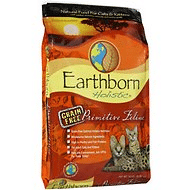 Earthborn Holistic Primitive Feline Earthborn Holistic Primitive FelineRead Reviews |
$2.28/lb |  |
 |
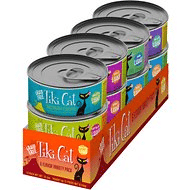 Tiki Cat Queen Emma Luau Variety Pack Canned Cat Food Tiki Cat Queen Emma Luau Variety Pack Canned Cat FoodRead Reviews |
$1.52/2.8 oz can |  |
 |
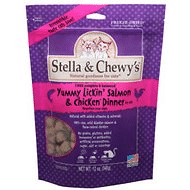 Stella & Chewy’s Yummy Lickin’ Salmon & Chicken Dinner Freeze-Dried Cat Food Stella & Chewy’s Yummy Lickin’ Salmon & Chicken Dinner Freeze-Dried Cat FoodRead Reviews |
$2.00/oz |  |
 |
How To Recognize A Exotic Shorthair
Coloring
Exotics are recognized in all of the same colors as Persians. These colors include white, blue, black, red, cream, chocolate, lilac, chinchilla silver and other silver patterns, golden colors and patterns, cameo colors and patterns, tortoiseshell, tabby, bi-color, Himalayan, and pointed colors. There is almost no end to the colors for the Exotic. Note that these are CFA colors. Other registries may use different terminology for the names of colors but they are the same colors.
Weight/Size
The Exotic is a heavily-boned, massive cat. They are cobby and muscular, with short, stout legs. It’s not unusual for Exotics to weigh 15 pounds. They are not especially tall cats, however. They tend to be low to the ground and some of their weight is due to the density of their bones.
Distinctive Features
As with their other features, the Exotic has a face that looks like the Persian. According to some sources, some Exotics have a more extreme Persian face than others but you can expect all of them to be brachycephalic (short-nosed or flat-faced). They have big eyes and a short, square body. The Exotic Shorthair looks like a shorthaired Persian, which is what they are intended to be. While their coat is short, it is a little longer than most shorthaired cats. It is also rather plush with a thick undercoat.
While some online sites state that Exotics shed very little or are almost non-shedding, many owners and breeders comment that this is not true. They state that some Exotics only shed a little but many shed a great deal. If you are thinking of getting an Exotic, talk to breeders and specifically ask about their cats’ coats and shedding so you will know what to expect.
Temperament
Exotics have a calm, gentle temperament, similar to the Persian. However, most of them are a little more lively than Persians owing to their American Shorthair heritage. They are affectionate, gentle cats and they enjoy being in your lap. Since only Persians are allowed as outcrosses now, they have more influence on the breed as time goes by.
Exotics do tend to be playful, curious cats. They love to chase a paper ball or watch water drip from a tap. They are sociable and they like to be near their owner. They are not a breed that likes to be left alone at home all the time. They tend to follow you from room to room. Exotics are known for being a loyal breed. They are particularly good as apartment cats and good for people that live in the city and they have good manners. Some owners and breeders claim that Exotics are easier to train than other cats. Some owners claim that, thanks to their American Shorthair roots, they make very good mousers.
The breed has a soft voice and chirps when they speak. They are easygoing and they usually get along well with kids and other pets. With their gentle, affectionate nature they make a good cat for families that have children.
Living with an Exotic Shorthair
Humans and Exotic Shorthairs
As you might expect, Exotics don’t require the intensive grooming that Persians need. However, it’s still important for you to help with your cat’s grooming. Exotics have as much fur as Persians, it’s just shorter. If you brush and comb your Exotic a couple of times per week you can remove loose hair and reduce hairballs.
You should also wipe their eyes to remove any gunk in the corners of the eyes. Brachycephalic breeds often tend to produce tears that can stain the face. There are a number of products easily available to remove these stains. You can wipe your cat’s face with a damp cloth or use one of these products to keep it clean.
Dogs and Exotic Shorthair
The Exotic Shorthair usually gets along well with friendly dogs and other pets. It’s always important to oversee these relationships, especially in the early days. Many times it’s easier to introduce a small puppy to an older cat since the cat will have the upper paw (so to speak). We do recommend that you keep your cat’s food out of reach of your dog. Most dogs will eat your cat’s food if they have the opportunity. You should also place your Exotic Shorthair cat’s litter box in an area that your dog can’t reach. Many dogs have an unsavory habit of eating things out of the litter box when they can. It’s also good to have perches and other high places handy for your cat to escape in case your dog gets pushy.
Other Cats and Exotic Shorthair
The Exotic Shorthair usually gets along well with other cats. Since they are sociable, if you have to be away from home all day, you may want to consider having another cat so your Exotic Shorthair won’t be lonely during the day.
If you are introducing a new cat into your home, regardless of age, it may take some time for the cats to get to know each other and become friends. You can’t rush these relationships. Cats have to work out who has higher social status, which cat gets the best sleeping spots, and other important details. They will likely become friends eventually so just be patient. You may want to add an extra perch or cat tree when you introduce a new cat to the house so there is less competition for the same spots. Any cat can be jealous at times, especially if they think you are not showing them enough attention. If you are bringing a new cat into your home, make sure that you continue to pay attention to your Exotic Shorthair or you could cause more problems between your cats.
Health
Exotic Shorthairs were bred from the start as a complete outcross so they do not have some of the issues associated with inbreeding or a particularly small gene pool found in some cat breeds. However, they still have some health issues, including some inherited from their Persian relatives.
As a brachycephalic breed, Exotics have potential issues with having a short-nose or flat face, as there are for all brachycephalic breeds. The cat’s tear ducts can overflow, which can stain the face (see above). Cats may have occasional sinus problems or a problem with teeth because the jaw is slightly shortened which can produce crowding. Having a shorter nose and air passages also makes a brachycephalic cat more sensitive to heat and high humidity so you should take extra care of your cat during these weather conditions. It’s important for the Exotic to stay cool. This is a breed that appreciates air conditioning in the summer months, especially if you live in a hotter climate.
Common Health Problems
Exotic Shorthairs are prone to several health issues.
Some Exotics can have calcium oxalate urolithiasis. This disease is occurs when stones crystallize in the cat’s bladder or kidneys. Urinary tract disease is common in cats and stones (uroliths) are responsible for 10-25 percent of these problems. They are made up of minerals found in the urine that clump together into stones. About half of these uroliths are “struvites,” with another 30-45 percent being made up of calcium oxalate. A smaller number of stones are made of urates or purine. It’s important for your veterinarian to determine what kind of urolith is present because they are treated differently. The Exotic seems especially prone to forming calcium oxalate stones. The same is true of the Burmese, one of the breeds that was used to develop the Exotic, so perhaps this propensity toward calcium oxalate stones derives from that source.
The uroliths in the bladder can irritate its lining and produce blood in the urine, cause pain, make your cat strain to urinate, and cause other problems. Sometimes the stone will get stuck in your cat’s urethra, obstructing the flow of urine. This is life-threatening and your cat needs emergency treatment.
The best way to avoid these uroliths in your Exotic’s bladder is by feeding a wet diet that has lots of moisture and by keeping lots of water available at all times. Moisture in food and drinking water dilute the minerals in the urine so they don’t form stones.
If your cat does show signs of having urinary tract stones, you need to work with your veterinarian to get rid of them. Your Exotic may need a prescription diet.
Some Exotic bloodlines have inherited a disease called polycystic kidney disease (PKD). This disease can lead to death from kidney failure. This is common in cats with Persian ancestry. The early symptoms of this disease are often very mild until the cat gets older so cats that are bred without testing can pass on the dominant gene to their offspring. According to the UC-Davis School of Veterinary Medicine in California, it’s estimated that some 37 percent of all Persians have PKD. Several studies using ultrasounds have suggested that the incidence of PKD in Exotics is between 40 and 50 percent. There is now a genetic test available to screen for PKD. Testing is recommended for Persians, Exotics, Himalayans, American Shorthairs, British Shorthairs, Scottish Folds, and any breed that uses these breeds as an outcross. It’s easy to take a DNA sample at home with a cheek swap and mail it to the UC-Davis laboratory for testing. The lab can send you a kit with instructions for taking the sample.
Some lines of Exotic Shorthairs have exhibited the heart disease hypertrophic cardiomyopathy (HCM). This disease can show up at any age but it is most common in older cats. Again, older cats have already had the chance to pass along their genes to their offspring. Early symptoms of HCM are usually very subtle and many owners don’t notice anything is wrong until their cat suddenly dies. This is the most common heart disease found in cats. It is widespread in virtually all breeds and in mixed breed cats.
Lifespan
Exotic Shorthairs tend to age slowly and they don’t fully mature until they are about two years old. Most Exotics become sexually mature later than the general cat population. Exotic Shorthairs are reported to have an average lifespan of 12-14 years though some individual cats may live much longer.
Pet Insurance for your Exotic Shorthair
Considering the health of your Exotic Shorthair and the cost of vet care today, you may want to investigate pet health insurance. This kind of health insurance allows you to have insurance in place in case your cat has an accident or has certain health problems. Instead of paying the full cost of expensive veterinary care, you would only pay a fraction. You can choose how much coverage you need and pick the plan that works for you and your cat. Veterinary health care can be expensive today so this is something to consider.
Diet and Nutrition
The optimal diet for an Exotic Shorthair is similar to that of other cats. They need good quality food that is high in meat protein. Many Exotic Shorthair breeders and owners recommend good quality cat foods that have the following:
- Named meats and fats
- No artificial colors, flavors, and preservatives
- Grain free
- Low carbohydrates
- Lots of protein
- Human grade ingredients
- With a preference for wet over kibble as the main source of nutrition
You should also make sure that the food has suitable Vitamin A and taurine. These vitamins and minerals are usually added to all cat foods labeled “complete and balanced” today. We recommend that any food you buy for your Exotic Shorthair be AAFCO-approved in the United States. While some people criticize AAFCO for various reasons, it still provides some minimal level of assurance that the food and labeling are meeting basic requirements. We also suggest that you look for foods that have a minimum of 40 percent protein (DMB). This is higher than AAFCO recommendations which are 26 percent for adult cats and 30 percent for kittens, but it is closer to the protein level a cat would have eating a raw/wild diet.
Best Foods for Your Exotic Shorthair
Here are a few foods we like for Exotic Shorthairs. They are good foods for most cats.
Best Dry Food For Exotic Shorthair Cats
Earthborn Holistic Primitive Feline

Earthborn Holistic Primitive Feline is high in protein, grain and gluten-free. It has good sources of meat protein that Exotics should enjoy and it’s low in carbs. It also has the added nutrients and supplements that Exotics (and other cats) need to stay healthy. This is an all life stage formula so you can feed it to kittens and adult cats. Earthborn Primitive Feline also comes in a Wild Sea Catch Grain Free dry cat food formula that is popular and several canned recipes.
Best Wet Food For Exotic Shorthair Cats
Smalls for Smalls Fresh Turkey Pate

Smalls for Smalls makes fresh, human-grade cat food carefully formulated for your cat based on a profile you create when you sign up. Smalls for Smalls recipes, such as the Fresh Turkey Pate, are all protein first, so you know your cat is getting optimal nutrition during every meal. Another thing to think about is the fact that cats actually get most of their hydration from their food, as well. Smalls for Smalls Fresh Turkey Pate has a high water content, which means your cat will stay hydrated and healthy. If the ingredients aren’t good enough for humans, they aren’t good enough for cats, either, according to Smalls for Smalls, so when you subscribe, you know you are giving your cat food you can feel good about from a company you can trust.
Tiki Cat Queen Emma Luau Variety Pack Canned Cat Food

Tiki Cat is another food that is often highly recommended for adult cats. We think that Exotics can benefit from eating this food. This food contains very natural ingredients with added vitamins and minerals. It’s high in moisture, protein, and fat, like food that your Exotic would catch as prey. Tiki Cat’s foods mimic live prey to a great extent and are biologically appropriate for cats. This variety pack features twelve 2.8-oz cans of the following formulas: (2) Hookena Luau, (2) Hanalei Luau, (2) Koolina Luau, (2) Puka Puka Luau, (2) Papeekeo Luau and (2) Napili Luau which provides your cat with ahi tuna and chicken, wild salmon, two different kinds of chicken, tuna and mackerel, and salmon and chicken. Grain, gluten, carbohydrate, starch and flour-free recipes.
Best Frozen Food For Exotic Shorthair Cats
Stella & Chewy’s Yummy Lickin’ Salmon & Chicken Dinner Freeze-Dried Cat Food

High in protein and made with salmon, chicken (with ground bone), and chicken organs, Stella & Chewy’s salmon and chicken freeze dried cat food will make your Exotic purr. Stella & Chewy has been making raw/frozen/freeze-dried foods since 2003, making them one of the older raw pet food companies. Their foods are minimally processed and they use no grains, gluten, fillers, added hormones or antibiotics. They try to make their foods close to what your cat would eat in the wild. This food is made from wild-caught salmon and cage-free chicken. If you’re looking for freeze-dried raw food, we think this food from Stella & Chewy’s is a good choice, along with their other freeze-dried cat foods.
Be sure to encourage your Exotic Shorthair to drink plenty of water, especially if you are putting down dry food. Some owners turn the kitchen or bathroom faucet on and let it trickle to encourage their Exotic Shorthair to drink more water. Drinking fountains are also a popular way to encourage your Exotic Shorthair to drink. Like many cats, they may not drink enough water if you simply put down a bowl of water.
Conclusion
Exotic Shorthairs are the number one breed in the United States for good reason. They are sweet, gentle, affectionate cats. They are also extremely loyal. Everyone comments on the breed’s devotion. While they are loving with the whole family, they usually single out one special person and become particularly attached. You should consider yourself very fortunate if you are that person! This is a wonderful breed for families and for singles. They are especially patient with children and they get along well with other cats and with friendly dogs. They are a little more active than Persians but still relaxed and calm. They have all of the wonderful traits people love in Persians without the long hair to groom. If you’ve always wanted a Persian but the thought of grooming a longhaired coat seemed daunting, the Exotic Shorthair could be the perfect cat for you. Talk to some breeders and find out more about this beautiful, adorable breed.

